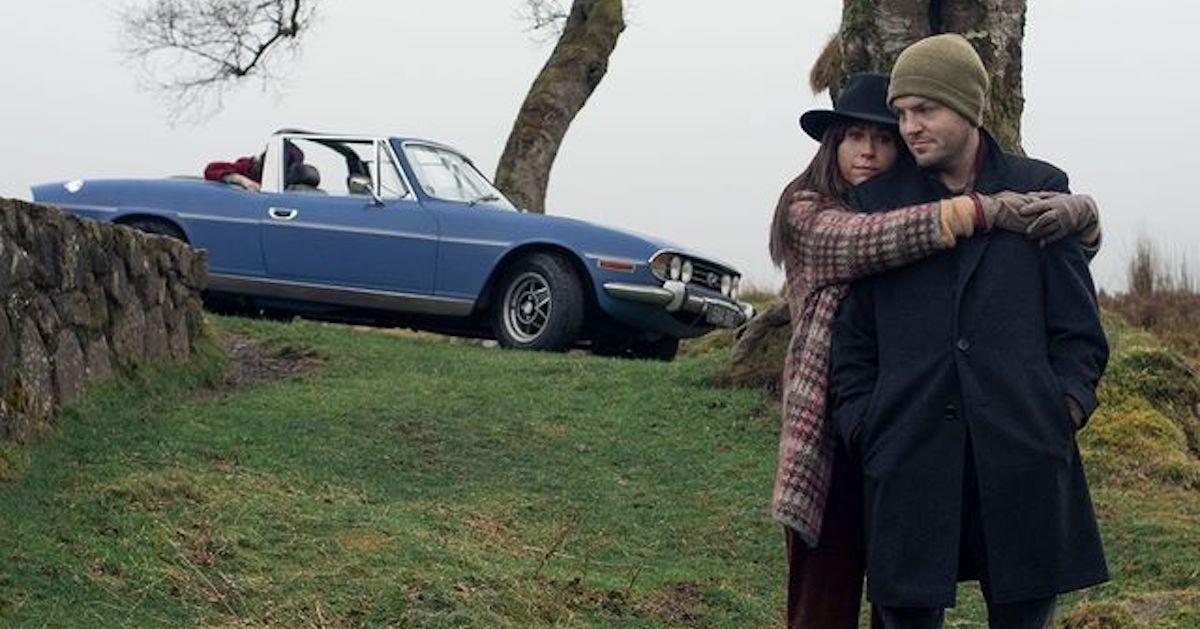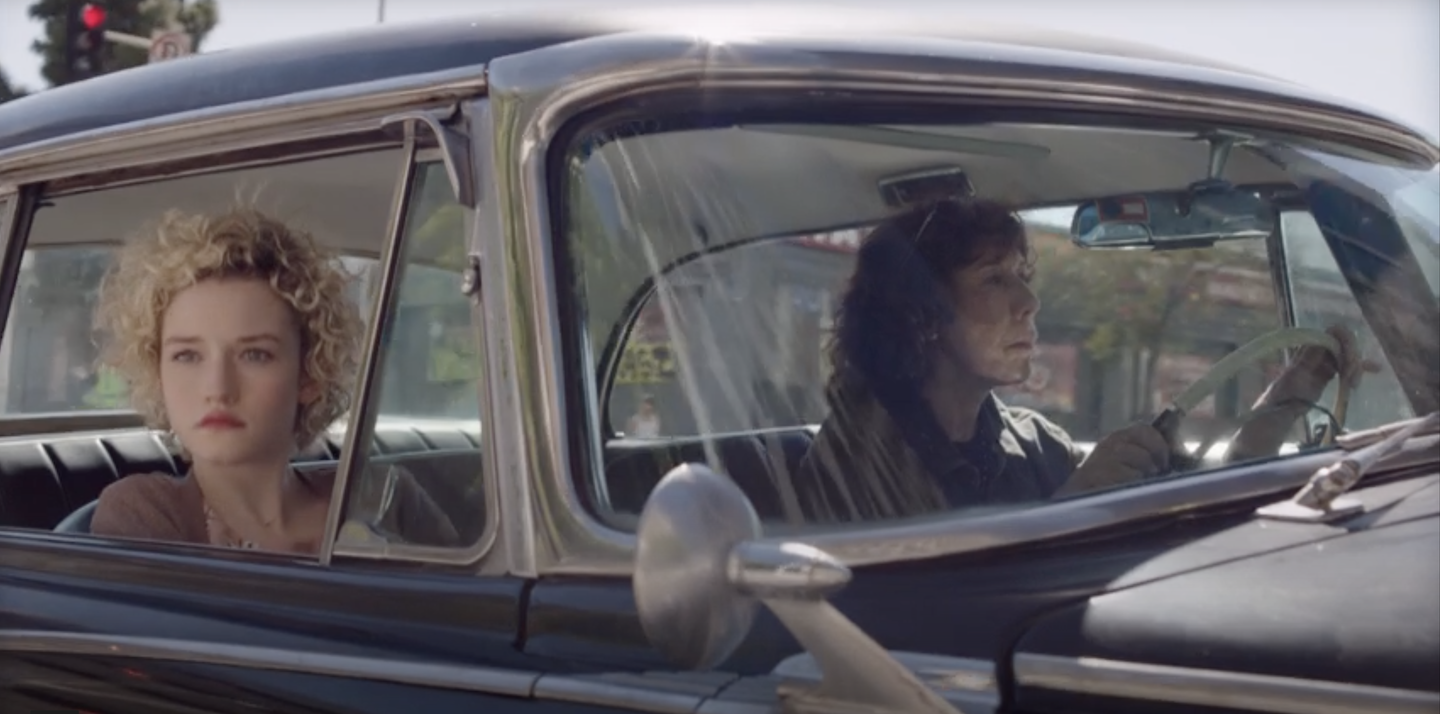While I am not a big network TV watcher, I enjoy viewing many of the series that find their way to Netflix or Amazon Prime. One of my favorites that has just returned is Modern Love, a series of short films taken from the New York Times essay feature of the same name. I was particularly taken with this season’s first episode – ‘On a Serpentine Road with the Top Down’ – as it addressed the relationship of a woman – played by British actor Minnie Driver – and her automobile, a 1970s Triumph Stag. The Stag was the impractical vehicle purchased by her late husband while they were both in medical school. It was the car in which they took family road trips and was a space in which they had meaningful family time. Although the widowed physician has remarried and has a second daughter, she is hesitant to part with the car that holds so many memories. She spends much time in the car alone, holding conversations with her late husband, as a way to reflect on her past as she travels through her grief. Like most classic vehicles, the Stag is ornery, unpredictable, and subject to frequent breakdowns. Her husband convinces her to sell it so as to make the family more financially stable. However, as they subsequently engage in an honest and open conversation about love, grief, and the inability to completely move on, her husband sells his boat so that he can buy back the Stag and with it, the memories it holds for the woman he loves.

As reviewer Lissette Saenz notes, ‘we get attached to things that remind us of the people we loved and lost.’ In a recent Sunday Times article, women spoke of vehicles inherited upon a loved one’s passing. As the owner of a 1936 Austin Healy explained, “The car is a part of my dad that I still get to hang onto” (Vowden). This sentiment is not only expressed in the Modern Love episode, but can be found in a number of what can only be described as female road trip films.
In a recent article published in the Journal of Popular Culture, I examine the relationship of women and cars in these cinematic offerings. Classic vehicles in the female road trip, I note, often serve as a container of memories for a woman who has suffered a deep personal loss. The cars the women drive are most often not their own; rather they are inherited after the death of the person they loved. I cite two films – Bonneville and Grandma – to demonstrate how an old vehicle can allow a grieving woman to reflect on her past while providing her with the opportunity to drive away from it.

In Bonneville, released in 2006, Jessica Lange plays the recently widowed Arvilla, who embarks on a road trip with two friends (Kathy Bates and Joan Allen) in her late husband Joe’s 1966 Pontiac Bonneville to deliver his ashes to his daughter in California. Before embarking on the journey, Arvilla spends some time alone in the car, feeling Joe’s presence and confronting her loss. Yet once she leaves her Utah town, Joe’s spirit slowly exits the Bonneville along with the ashes Arvilla disperses along the way. In its place is Arvilla’s growing confidence in her ability to create a new life for herself.
The 2015 film Grandma stars Lily Tomlin as Elle, a widowed lesbian poet-in-residence who spends a day driving her deceased partner’s 1955 Dodge Lancer across Los Angeles in an attempt to cash in on past debts to pay for her granddaughter’s abortion. While the journey is ostensibly about obtaining funds to help her granddaughter Sage (Julia Garner), it is in truth about grief, loss, uncertainty, and Elle’s ability to move on. It is also concerned with family and the developing relationship between grandmother and granddaughter.

Women have a different relationship to old cars than do men. In the United States, classic car ownership is overwhelmingly male and is most often prompted by nostalgia. Men of a certain age purchase the models they drove or desired when young as a way to remember or reimagine a young and virile past. Whereas aging men often view the classic car through a personal lens – as a reflection of their former selves – women are more likely to view aging automobiles as a connection to others. These sentiments are not only represented on screen, but are evident in real women’s lives. In my research on women and muscle cars, for example, I spoke with many female owners who inherited cars from fathers or husbands who had passed. Women spoke of both the sadness and joy they experienced when taking these old cars out for a ride.
Like the Modern Love episode, Bonneville and Grandma speak to how an automobile can hold one’s grief while simultaneously providing the means to move beyond it. As a metaphor, as in real life, the automobile is uniquely qualified for this undertaking – it is a physical space in which the essence of a previous owner can be experienced, and has the physical machinations to move a body and a life forward. The films mentioned here reflect an acceptance, as reviewer Tisha Lardizabal notes, that ‘moving on doesn’t mean having to be rid of all of the love and memories that were created.’ They also suggest that the relationship between women and cars is richer, more universal, and more complicated than most representations – in the media and popular culture – would have us believe.
Lardizabal, Tisha. “Review: Amazon Prime’s ‘Modern Love’ Season Two Premiere ‘On a Serpentine Road, With the Top Down’.” mxdwn.com 15 Aug 2021.
Lezotte, Chris. “What Would Miss Daisy Drive? The Road Trip Film, the Automobile, and the Woman Behind the Wheel.” The Journal of Popular Culture.
Saenz, Lisette Sanuza. ‘Modern Love’ 2×01 Review: “On a Serpentine Road, With the Top Down.” Fangirlish 13 Aug 2021.
Vowden, Charlotte. “Women With Drive: The Ladies Who Love Being Behind the Wheel of a Classic Car.” Driving 28 Oct. 2018.